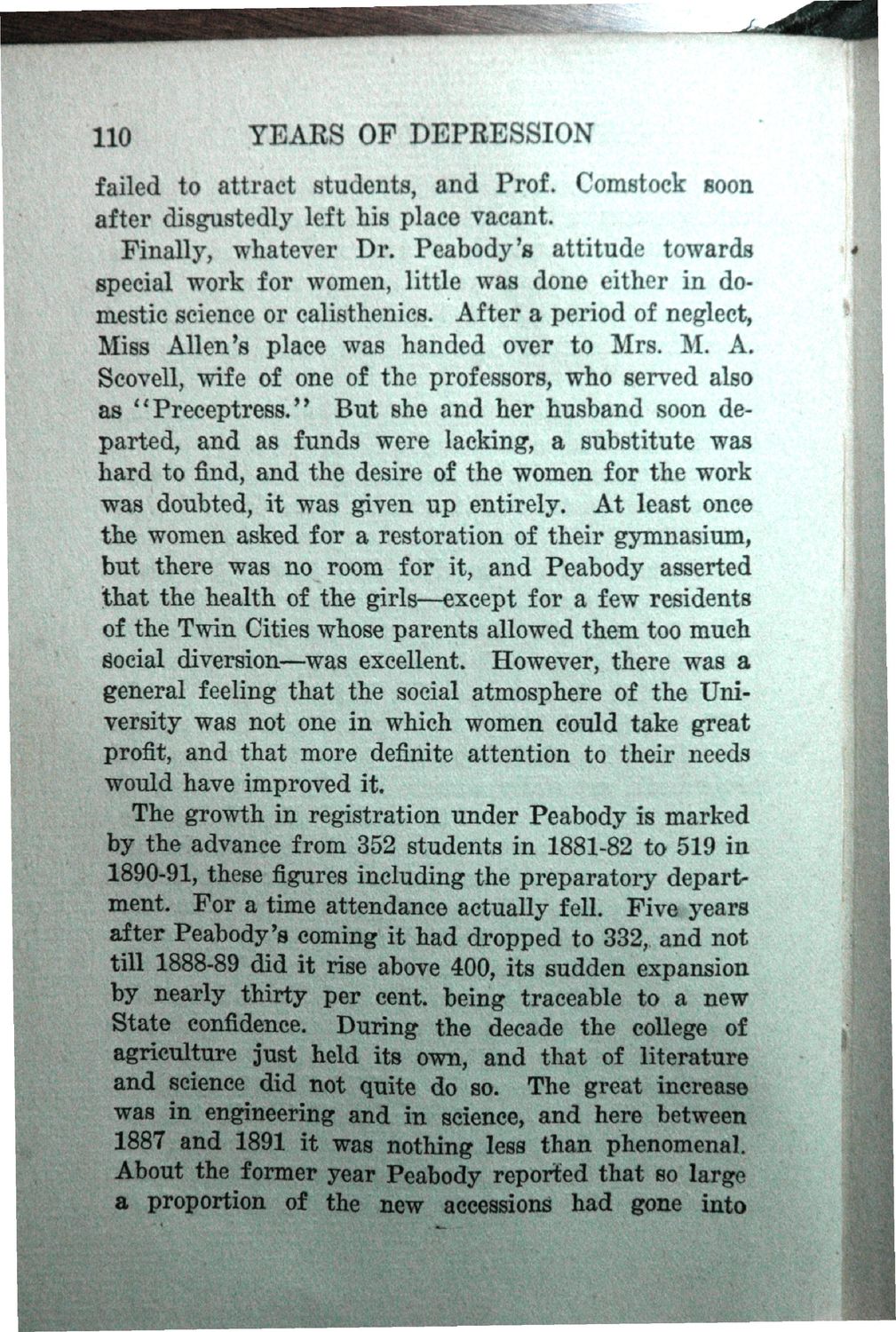| |
| |
Caption: Book - History of the University (Nevins)
This is a reduced-resolution page image for fast online browsing.

EXTRACTED TEXT FROM PAGE:
110 YEARS OP DEPRESSION failed to attract students, and Prof. Comstock soon after disgustedly left his place vacant. Finally, whatever Dr. Peabody's attitude towards special work for women, little was done either in domestic science or calisthenics. After a period of neglect, Miss Allen's place was handed over to Mrs. M. A. Scovell, wife of one of the professors, who served also as "Preceptress.'' But she and her husband soon departed, and as funds were lacking, a substitute was hard to find, and the desire of the women for the work was doubted, it was given up entirely. At least once the women asked for a restoration of their gymnasium, but there was no room for it, and Peabody asserted that the health of the girls—except for a few residents of the Twin Cities whose parents allowed them too much Social diversion—was excellent. However, there was a general feeling that the social atmosphere of the University was not one in which women could take great profit, and that more definite attention to their needs would have improved it. The growth in registration under Peabody is marked by the advance from 352 students in 1881-82 to 519 in 1890-91, these figures including the preparatory department. For a time attendance actually fell. Five years after Peabody's coming it had dropped to 332, and not till 1888-89 did it rise above 400, its sudden expansion by nearly thirty per cent, being traceable to a new State confidence. During the decade the college of agriculture just held its own, and that of literature and science did not quite do so. The great increase was in engineering and in science, and here between 1887 and 1891 it was nothing less than phenomenal. About the former year Peabody reported that so large a proportion of the new accessions had gone into
| |